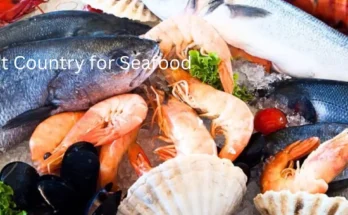Imitation crab, or kanikama, is a widely consumed shellfish item that has made its way into many homes all over the world. Loved for its affordability, adaptability, and mouthwatering taste, it is prepared from processed fish, typically surimi (a fish paste). This post will explore the definition of, its culinary applications, its health advantages, and the reasons it ought to be a mainstay in your pantry.
What is Kanikama?
A shellfish product called kanikama has a flavor and texture similar to crab flesh. It although it is dubbed imitation crab, is devoid of real crab. It is generally produced from pollock or other white fish, which is mashed into a paste called surimi. After that, this paste is molded, colored, and given a crab flesh flavor.
The Origin of Kanikama
In Japan, the idea of surimi has been around for millennia. On the other hand, the modern form of its emerged during the 1970s. It became well-known in Japan very rapidly, and it soon traveled to other countries, such as the US and Europe. Its inexpensive price, simplicity of preparation, and capacity to replace crab in a variety of recipes are the reasons behind its growing popularity.
Culinary Uses of Kanikama
The adaptability of it is a major factor in its appeal. It works well in a variety of recipes, including cooked foods and salads as well as sushi. These are some well-liked methods for preparing foods that include kanikama.
Kanikama in Sushi
A staple of many sushi dishes, especially California rolls, is kanikama. It is an excellent alternative to crab because of its solid texture and mildly sweet flavor. Combine it with avocado and cucumber to produce a basic sushi roll; wrap in rice and seaweed.
Kanikama in Salads
Your salads can have a seafood edge, thanks to its . For a light supper, shred it into pieces and combine it with cucumber, lettuce, and a zesty dressing. Try an avocado and its salad with a creamy dressing for a heartier meal.
Cooked Dishes with Kanikama
it is also very good for prepared foods. provide it to stir-fries, casseroles, or pasta to provide a simple and quick seafood taste. It is a flexible ingredient for many different recipes because of its capacity to hold up well throughout cooking.
Health Benefits of Kanikama
Although it lacks some of the nutrients found in actual crab meat, it nevertheless has certain health advantages. It is a fantastic choice for anyone trying to stick to a healthy diet because it is low in calories and fat. It also contains protein, which is necessary for the development and repair of muscles.
Source of protein
Protein is essential for the body’s tissue growth and repair processes. A serving of it contains about 6 grams of protein, which is a respectable quantity. Because of this, it’s a fantastic way to increase your protein intake without consuming as many calories or fat as you would from other protein sources.
Contains omega-3 fatty acids.
Because it is derived from fish, it has omega-3 fatty acids. These vital fats have a reputation for improving heart health by lowering the risk of heart disease and decreasing inflammation.
Why You Should Try Kanikama
Trying it has a lot of benefits. It is reasonably priced, adaptable, and suitable for a wide range of recipes. It also offers a way to enjoy crab’s flavor and texture without having to pay a higher price. Here are some strong arguments in favor of trying its.
Affordable Seafood Option
Because it might be pricey, real crab is less accessible for regular meals. In contrast, it is far more reasonably priced. This lets you savor seafood flavors without going over budget.
Easy to Use
It is very simple to use. It arrives already cooked and ready to eat, so you don’t need to do any more work when adding it to recipes. It’s therefore a practical choice for hurried meals and snacks.
Versatile Ingredient
Another significant benefit of it is its adaptability. It works great in hot recipes like stir-fries and casseroles as well as cold ones like salads and sushi. It is a useful addition to any kitchen because of its adaptability.
Long shelf life
Fresh crab is less shelf-life-extending than kanikama. It is usually offered for sale in containers that are vacuum-sealed to help keep it fresh. This implies that you won’t have to worry about it going bad quickly, and you may keep it on hand for longer.
How to Choose and Store Kanikama
Choosing the Best Kanikama
When purchasing Kanikama, search for packages with a firm texture and excellent sealing. Packages that smell odd or slimy should be avoided, as they may be spoiled. it should be eaten within a few days of being opened and kept in the refrigerator.
Storing Kanikama
It is best to keep kanikama refrigerated. The package can be kept in storage for a few weeks if it is not opened. When Kanikama is opened, store any unused portion in an airtight container and use it within a few days.
Conclusion
Kanikama, a cost-effective and adaptable seafood choice, can improve a wide range of recipes. A quick and delicious way to savor the flavors of seafood is with kanikama, which may be used for sushi, salad dressings, or cooked dishes. It is a useful ingredient in any kitchen due to its extended shelf life, convenience of use, and health advantages. Now is the ideal moment to try Kanikama, a delicious shellfish dish, if you haven’t before. product.
FAQ
A seafood product called kanikama, or imitation crab, is manufactured from processed fish, usually surimi, and has a flavor and texture similar to that of crab flesh.
A: The primary ingredient of kanikama is surimi, a paste prepared from white fish, like Japanese pollock.
A: Because of its versatility, kanikama can be found in salads, pasta dishes, stir-fries, sushi, and casseroles.
A: Yes, Kanikama is a healthy addition to your diet since it is low in calories and fat, high in protein, and contains omega-3 fatty acids.
A: Although genuine crab is absent from Kanikama, its flavor and texture are replicated. Compared to real crab flesh, it is less expensive and keeps better.




